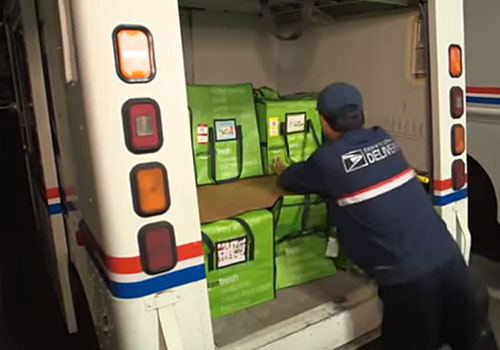
A Better Way to Go Postal
The justification for the Postal Service’s monopoly is long past. Whatever possessed President Obama to mention the travails of the post office while discussing health care the other day, his timing was certainly apt. The Postal Service is headed toward a loss of $7 billion this year and another $7 billion in 2010. Naturally, Congress is planning another bailout rather than the kind of reform that would recognize how technology has transformed modern communications.
Most mail today is delivered electronically via email. Traditional postal mail volume has fallen by nearly 20% since 2000, and the average household gets one-third fewer letters than a decade ago. But this is only the first stage of the decline. The transition to Internet communications means that the Postal Service’s core business—from paying bills, to sending birthday greetings, to delivering magazines—is slowly vanishing. This is on top of the package business that has already been transformed by Federal Express and UPS.
Not that the Postal Service has ever been a paragon of efficiency. If the cost of a postage stamp had risen at merely the rate of inflation since 1950 when a stamp cost two cents, today you could send a first-class letter for 30 cents. Instead the cost rose in May to 44 cents from 42 cents.
These higher prices have corresponded with worsening service. The mailman used to deliver twice a day in urban areas, but now Postal Service Chief Executive John Potter says he wants to stop Saturday service to reduce costs. No private business in America could continually raise prices, lose billions of dollars and then hope to win back customers by promising poorer service.
Here’s a secret Washington doesn’t want to admit: That 14 cent per letter cost hike after inflation over the past 60 years imposes a $20 billion a year toll on the U.S. economy. The government mail system is essentially a $20 billion annual income transfer from businesses and households to the postal unions.
About 80 cents of every postal dollar pays for employee salaries and benefits (compared to less than 50 cents for Fed Ex and UPS). What that means is that if you want to cut costs at the post office, you have to slash labor expenses. Mr. Potter has reduced Postal Service employment to 650,000 from 800,000 the past four years, largely through attrition. But he still employs 650,000 workers who have among the best wages and benefits in all of American life.
Most employees have no-layoff clauses, the starting salaries are about 25% to 30% higher than for comparably skilled private workers, and the fringe benefits are so expensive that the Government Accountability Office says $500 million a year could be saved merely by bringing health benefits into line with those of other federal workers. Mr. Potter has to set aside $5 billion a year just to pay for health insurance. Postal management now wants to “save” money by not advance-funding those obligations, and Congress is likely to say yes. But that doesn’t save a dime; it simply creates even larger unfunded liabilities down the road.
The four biggest postal-carrier union contracts come up for renewal in 2010 and 2011, and Congress and the Obama Administration can best serve the public by using the negotiations to promote a major restructuring. One priority should be closing thousands of obsolete post offices around the country; many post offices now serve towns with fewer than 250 people. This is something Mr. Potter has long wanted to do, but thanks to Congressional meddling, closing a small town post office can be harder than shutting a military base.
The most overdue reform is to strip away the Post Service’s monopoly on first-class mail and bulk mail. Competition is the key ingredient to innovation, low prices and good service. This was Mr. Obama’s insight at his recent health-care town hall when he noted that “UPS and FedEx are doing just fine, right? No, they are. It’s the Post Office that’s always having problems.”
The argument has been made for 200 years that the postal monopoly is necessary to “bind the nation together.” Once that was at least plausible. But today the Internet delivers to the most remote corners of Alaska and the Badlands at one-one-hundredth the cost of snail mail. The sooner Congress requires the Postal Service to shrink and adapt to this reality, the smaller will be the losses imposed on taxpayers.












